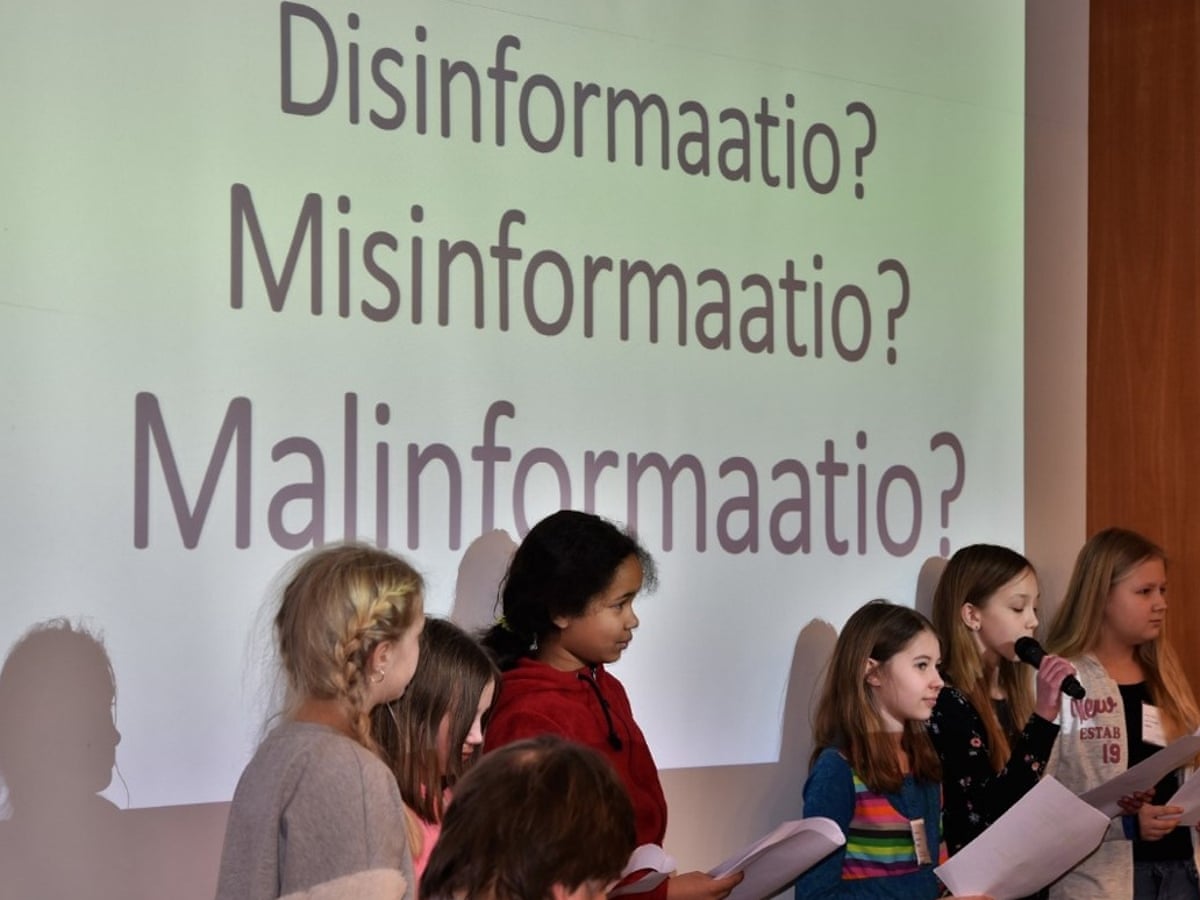Finland’s Schools Are Training Kids to Outsmart Fake News
Imagine scrolling through your feed during the 2024 U.S. elections, only to stumble upon a deepfake video of a candidate confessing to a scandal. Or picture the viral AI-generated images from early 2025 that tricked millions into believing a celebrity had endorsed a scam. These aren't isolated incidents—they're part of a misinformation tsunami powered by AI, with experts warning of even more sophisticated fakes ahead. In this chaotic digital landscape, Finland stands out as a beacon. For over a decade, its schools have embedded media literacy into the core curriculum, teaching children as young as six to spot disinformation like pros. Finland consistently ranks #1 in the world for media literacy, proving that early education is the ultimate shield against fake news. As global trust in information plummets, let's explore how this Nordic powerhouse is raising a generation of savvy truth-seekers.
Why Finland Reigns Supreme in Media Literacy
Finland's dominance isn't luck—it's strategy. The European Media Literacy Index, published annually by the Open Society Institute, has crowned Finland #1 for seven straight years as of 2025, scoring a stellar 74 out of 100. This index measures resilience to fake news through factors like education, media freedom, and public trust.
What sets Finland apart?
- Proactive response to threats: Sharing a 1,300-km border with Russia, Finland faced early waves of state-sponsored disinformation, prompting a national push starting in the 1970s.
- Holistic approach: Media literacy isn't a standalone class—it's woven into every subject, from history to math.
- Lifelong learning: Lessons continue through adulthood via libraries and community programs.
See the gap in this ranking chart:
The result? Finnish kids outperform adults in spotting hoaxes.
From Kindergarten to Graduation: How Media Literacy Is Taught
Media literacy hit the national curriculum in 2016, but roots trace back further. Every teacher, regardless of subject, delivers these lessons—no specialist needed. Starting in first grade (age 7), kids learn progressively complex skills.
Key age-based milestones:
- Ages 3-6 (Pre-school): Basic source evaluation through games and stories.
- Ages 7-12 (Primary): Fact-checking headlines, identifying clickbait.
- Ages 13-16 (Secondary): Deep dives into algorithms, deepfakes, and propaganda.
- Ages 17+ (High school): Ethical content creation and civic journalism.
Standout programs:
- Mediametka: A "passport" system where kids collect stamps for completing 20+ lesson modules, like "Is this photo manipulated?"
- Me & MyCity: Simulated society days where students run "newsrooms" and debate fake stories.
- Opetus.tv: Free online videos for hands-on exercises, updated for AI threats in 2025.
In a typical class, a teacher might present a dubious social media post: "Does this match reliable sources? What's the motive?" Students cross-check with tools like FactCheck.fi.
Real Classroom Stories: Kids Who Crush Fake News
Take Hiidenkiven School in Helsinki: Sixth-graders recently dismantled a fabricated story about a "zombie outbreak" faster than their teachers. "We checked the URL—it ended in .ru," one student explained.
Proven methods in action:
- S.U.N. technique: Source (credible?), Urgency (sensational?), Need (emotional trigger?).
- Reverse image search: Taught via Google tools to expose recycled fakes.
- AI detection: 2025 updates include spotting voice clones and generated text.
Studies confirm impact:
- 90% of Finnish teens can identify biased reporting.
- Lower susceptibility to scams and propaganda vs. global averages.
| Skill | Taught Via | Real-World Win |
|---|---|---|
| Source Verification | Cross-referencing sites | 95% spot phishing |
| Visual Analysis | Photoshop/ AI detectors | Detect deepfakes in seconds |
| Bias Recognition | Debate clubs | Resist echo chambers |
| Ethical Sharing | Role-playing | 80% pause before reposting |
These aren't abstract—they're saving Finland from info wars.
Facing New Frontiers: AI and the Future of Disinformation
AI ups the ante, but Finland adapts. 2025 curriculum tweaks target generative tools—kids now quiz ChatGPT outputs and watermark checks. "AI could make fakes indistinguishable," warns educator Jussi Toivanen, but our kids are ready to question everything.
Global ripple: Estonia and Sweden borrow modules; U.S. states eye pilots.
FAQs: Everything You Need to Know About Finland's Approach
1. At what age does media literacy start in Finland? From pre-school (age 3-6), building to advanced skills by high school.
2. Is it a separate subject? No—integrated into all classes for seamless, daily practice.
3. How do they handle AI-generated fakes? Lessons on detection tools, watermarking, and "AI disclaimers" added in 2025.
4. Can other countries copy this? Absolutely—free resources like Opetus.tv are open-source.
5. What's the biggest success metric? #1 ranking in Media Literacy Index for 7 years straight.
6. Do Finnish kids really beat adults at this? Yes—studies show primary students spot hoaxes faster.
7. How can parents get involved? Download Mediametka at home; discuss news daily.
Take the Finland Challenge: Empower Your Kids Today
Finland proves education trumps censorship. Start small: Tonight, fact-check a family headline together. Download free media literacy guides from Finland's Ministry of Education. Share this post, tag your school board—demand change. The future belongs to those who question wisely. Will you raise the next generation of truth warriors? Comment your first lesson below!
References
- Euronews: Finland's War on Fake News - AI challenges.
- D&C: Preparing Citizens for Fake News - 2025 ranking.
- Fortune: 6-Year-Olds Spot Disinfo - Classroom successes.
- CNN: Finland Winning War on Fake News - In-depth strategy.
- Finland.fi: Media Literacy Education - Official curriculum.
- Open Society: Media Literacy Index - Latest rankings.


.png)


.jpg)
.jpg)





.jpg)